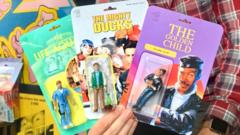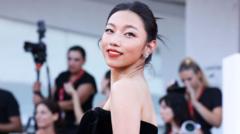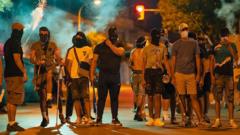Creatives are rallying against the rise of AI-generated doll images, fearing the impact on their livelihoods, as the #StarterPackNoAI movement gains momentum in response.
**The Fight for Creative Integrity: Artists vs. AI Doll Trend**

**The Fight for Creative Integrity: Artists vs. AI Doll Trend**
As AI-generated images flood social media, artists express concerns over creativity, intellectual property, and employment.
Recent trends have seen the creation of AI-generated images that present individuals as action figures, raising alarm among artists and creatives who feel their livelihoods are endangered. Since early April, many enthusiasts have shared their AI-generated doll images online, despite potential environmental repercussions, privacy concerns, and the erosion of artistic value.
Nick Lavellee, an established creator of custom action figures, voiced his anxiety over the deluge of AI images saturating social media. “People are sick of them,” he remarked, asserting that AI-generated art undermines the unique artistic aesthetic of handmade creations. Lavellee’s custom figures—a specialty he has honed over six years—can command prices as high as $250 online, but he fears the increased visibility of AI-generated versions could diminish public appreciation for his work.
The #StarterPackNoAI movement has emerged in response to this trend, with numerous artists expressing their frustration. Maria Picassó Piquer, a participating artist, noted the uniformity of AI-generated pieces compared to the diversity of handmade artwork. The trend highlights concerns that AI systems often rely on "stolen" works for their datasets, potentially infringing on artists’ rights and diminishing their chances of securing new clients.
Illustrator Dav le Dessineux from Bordeaux described the negative impact of AI on traditional design work, sharing that some have already lost contracts to AI-produced designs. He emphasized the simplicity of true artistry with his depiction of just a pencil and paper, stating that originality does not require complex tools.
Other artists, like Eli Dibitonto from Italy, share the sentiment of enjoying the creative process, valuing spontaneity over perfection in their artwork. Student Evie Joyce echoed this, highlighting the meaningful effort and personality that goes into human-created art contrasting with the impersonal nature of AI-generated images. “With AI, it can even steal from artists... it just loses that touch of personality,” she explained.
While acknowledging the push against AI practices, Lavellee suggested that AI could be a beneficial tool if used wisely. He argued that many artists explore AI's potential, albeit cautiously. In parallel, Henk van Ess, an expert in AI, critiqued the focus on trivial AI applications while acknowledging its capability to tackle significant issues.
Despite the challenges posed by AI, artists like Lavellee and Dessineux remain optimistic about the enduring value of handcrafted works. Lavellee expressed hope that audiences would distinguish between authentic artistry and AI-generated imitations, while Dessineux aspired to be among the select few artisans whose skills retain relevance in an increasingly automated world.
In the face of AI's encroachment, these artists reaffirm their commitment to creative integrity and their craft, standing firm in a landscape overshadowed by digital alternatives.


















